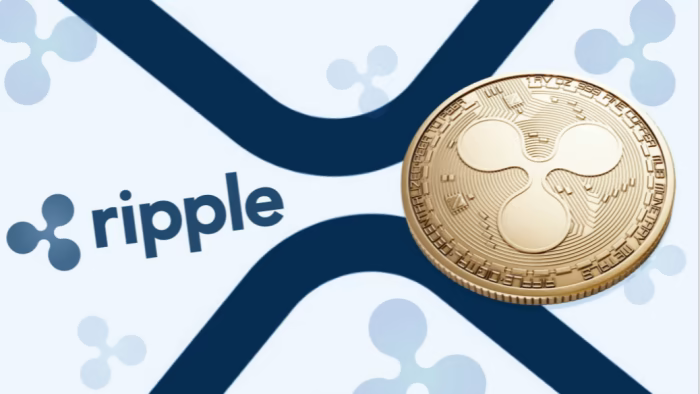Ripple isn’t your typical cryptocurrency. Unlike Bitcoin, which focuses on peer-to-peer transactions, Ripple aims to revolutionize cross-border payments for financial institutions. It’s a blockchain network with its own digital asset, XRP, designed to facilitate fast, secure, and cost-effective international money transfers. Unlike proof-of-work systems used by many cryptocurrencies, Ripple relies on a unique consensus mechanism for validation, enabling transactions to be confirmed in seconds at a minimal cost. This makes it especially attractive for banks looking to streamline their international payment processes.
Technology Behind XRP
Ripple Technology Architecture: A Deep Dive
Ripple’s architecture is akin to a meticulously crafted blueprint. Here are the key aspects:
Ripple Core: At the heart of Ripple’s technology lies the Ripple Core. This robust foundation encompasses essential functionalities of the Ripple network. It’s like the bedrock upon which the entire system is built1.
Consensus Mechanism: Unlike Bitcoin’s proof-of-work, Ripple employs a unique consensus algorithm called the Ripple Consensus Algorithm (RCA). This mechanism enables agreement among network participants without relying on a central authority. It ensures the integrity and reliability of transactions within the Ripple network2.
Smart Contracts: Ripple’s architecture supports smart contracts, allowing for programmable transactions without intermediaries. These contracts enhance flexibility and efficiency in value transfer1.
Bridge Between Payment Systems: The Ripple network acts as a bridge between various payment systems. It facilitates fast and efficient value transfer, making it ideal for cross-border transactions1.
Integration APIs: Ripple provides integration APIs that allow developers to seamlessly connect their applications with the Ripple network. This interoperability fosters the exchange of assets and information1.
Distributed Ledger Technology: Powered by distributed ledger technology, Ripple offers a decentralized and transparent platform for global financial transactions. It’s a game-changer in the world of finance1.
Ripple Labs and the U.S. Securities and Exchange Commission (SEC)
The SEC vs. Ripple: A Complex Legal Battle
Ripple Labs, founded in 2012, initially aimed to revolutionize cross-border money transfers through its RippleNet network and the cryptocurrency XRP. However, over time, XRP expanded beyond its intended use, leading to a legal showdown.
The SEC’s Allegations
In 2020, the SEC filed a lawsuit against Ripple Labs and its executives, including co-founder Chris Larsen and current CEO Brad Garlinghouse. The crux of the matter lies in XRP’s initial public offering (IPO). The SEC contends that Ripple raised funds by selling XRP tokens in unregistered security offerings to investors worldwide. Additionally, the executives allegedly engaged in personal unregistered XRP transactions worth approximately $600 million.
XRP: Security or Not?
The heart of the dispute revolves around whether XRP qualifies as a security. The SEC argues that it does, citing the Howey test, a landmark Supreme Court case from 1946. According to this test, an investment contract is considered a security if investors lack control over the asset’s profits. In Ripple’s case, XRP was used to fund the platform, enriching its management. Notably, the SEC distinguishes XRP from Bitcoin, which it does not classify as a security.
Recent Developments
In a recent victory for Ripple, Judge Torres ruled that XRP is not a security, but only in the context of programmatic sales on digital asset exchanges1. However, the legal battle continues, and the implications for the crypto market remain uncertain.
As the courtroom drama unfolds, the fate of XRP hangs in the balance—a digital asset caught between innovation, regulation, and investor confidence.
The Future of XRP: Navigating Challenges and Opportunities
A Brief History
XRP, created by Ripple Labs, has witnessed remarkable highs and lows. From its modest beginnings in 2013 to the explosive bull run of 2017, XRP has left an indelible mark. However, it’s essential to understand the challenges it faces:
Legal Battles: The ongoing legal dispute with the U.S. Securities and Exchange Commission (SEC) has cast a shadow over XRP. The SEC alleges that XRP constitutes an unregistered security, leading to uncertainty and volatility.
Market Sentiment: Investor sentiment fluctuates based on regulatory developments and news. XRP’s fate often hinges on legal outcomes and public perception.
Optimistic Predictions
Despite these hurdles, some crypto analysts remain optimistic about XRP’s future. Here are a few reasons why:
Market Share: Ripple’s ambitious goal is to capture a significant portion of the global payments market. If successful, XRP could experience substantial growth.
Bullish Forecasts: Some predictions suggest that XRP might reach impressive price points—ranging from $10,000 to $500—driven by Ripple’s expanding influence1.
Innovation Continues: Ripple continues to innovate, enhancing its payment platform. As adoption grows, XRP’s utility could increase.
Ripple’s Role
Beyond XRP’s price, consider Ripple’s broader impact. Its vision of seamless cross-border transactions and efficient money transfers remains compelling. Whether through partnerships with financial institutions or technological advancements, Ripple’s influence extends beyond XRP alone.
Conclusion
The future of XRP remains intertwined with regulatory clarity, technological advancements, and market dynamics. As investors and enthusiasts, we watch eagerly, hoping that XRP’s potential shines through the challenges it faces.



